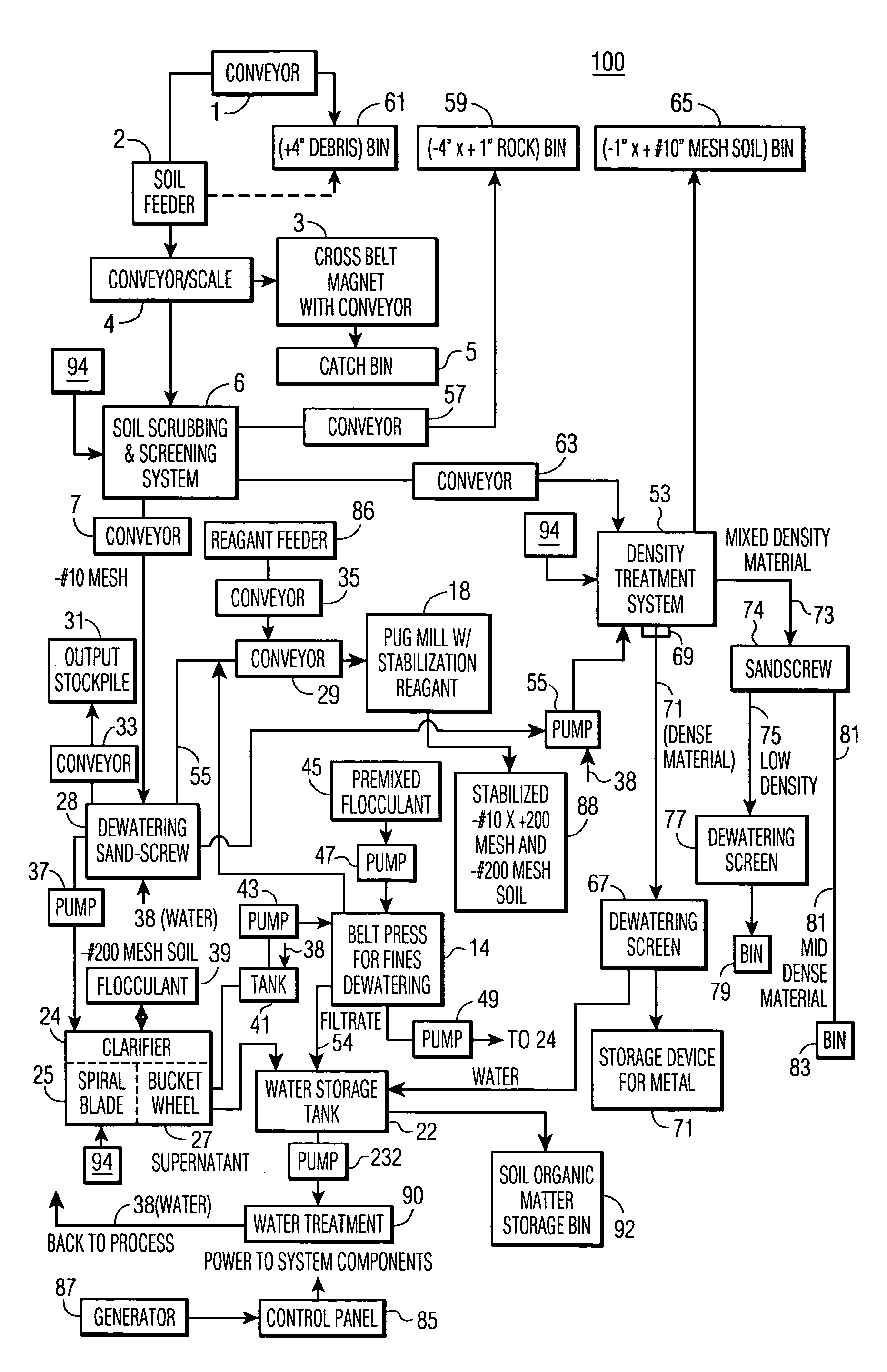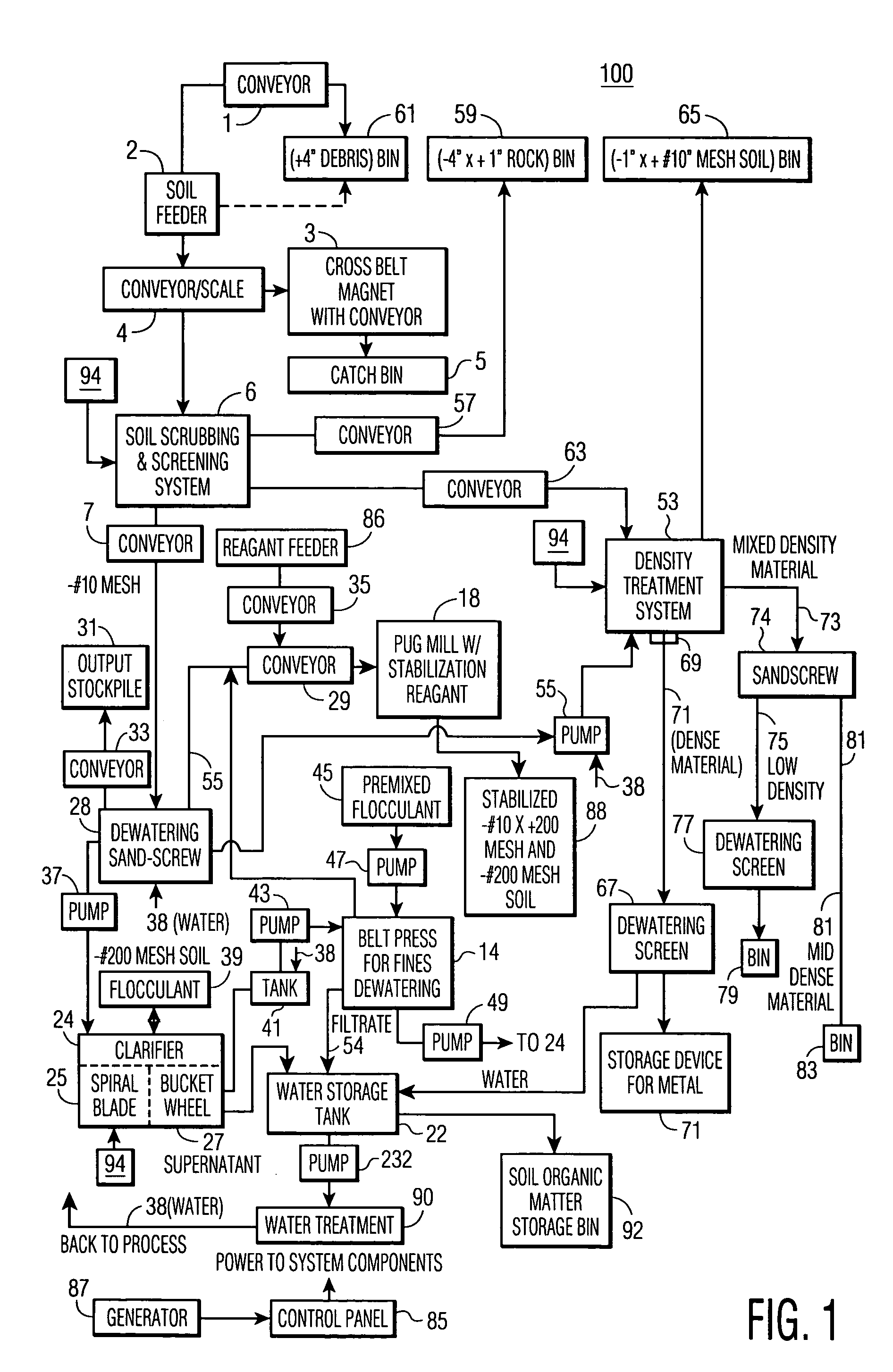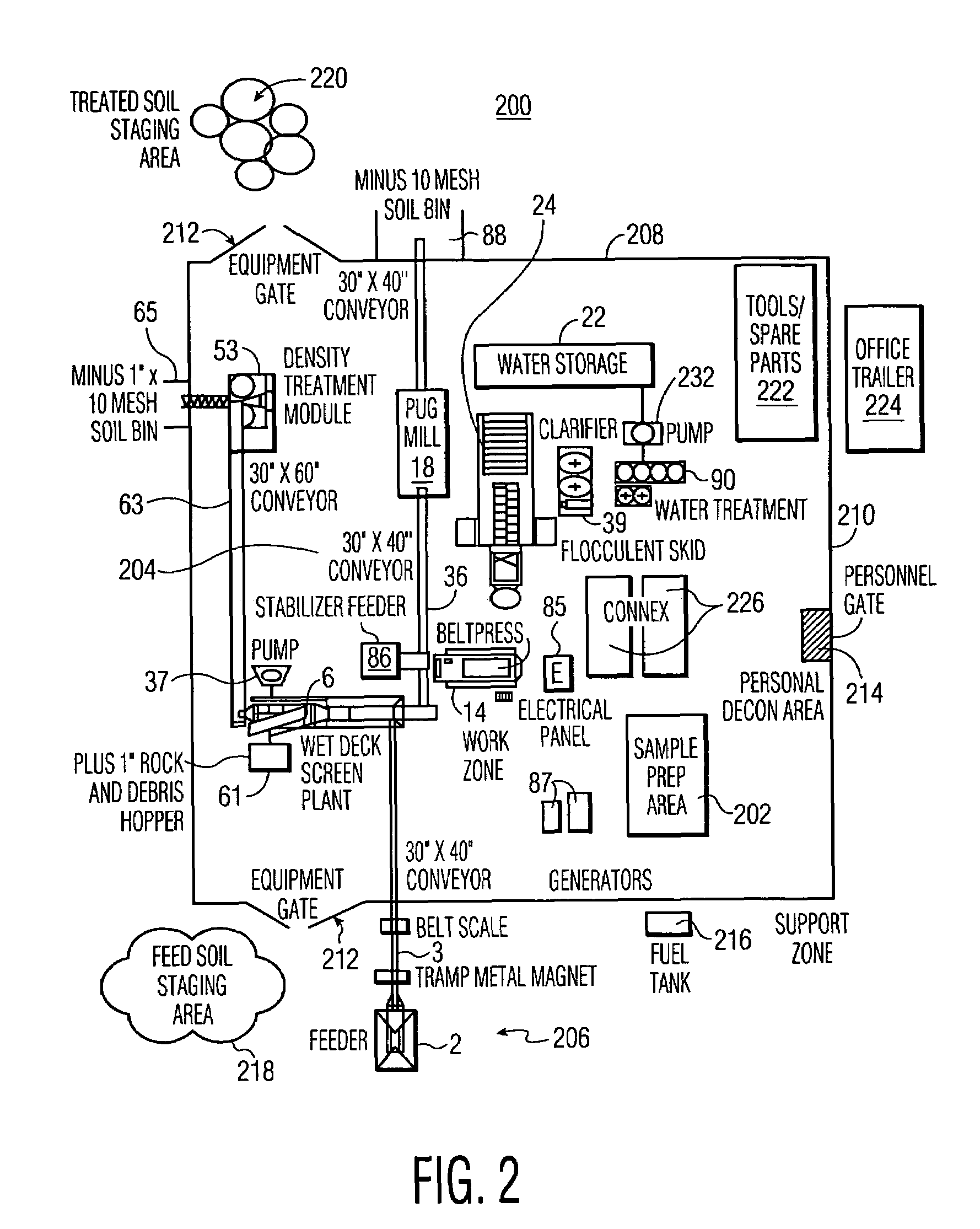Method and system for removing contaminants from soil
a technology of soil contamination and soil treatment, applied in the field of soil treatment process, can solve the problems of large environmental contamination, contaminated soil reclamation, health hazards for people, etc., and achieve the effects of eliminating lead leachability, facilitating on-site soil reuse, and high production ra
- Summary
- Abstract
- Description
- Claims
- Application Information
AI Technical Summary
Benefits of technology
Problems solved by technology
Method used
Image
Examples
example
Example of Small Arms Firing Range Decontamination:
[0087]The overall objective of the trial was to determine the optimal individual components for particle separation and stabilization, and to demonstrate and validate the environmental acceptability of the soil treatment sequence by treating a minimum of 7,500 tons of lead contaminated soil taken from a military range in an environmentally acceptable and cost effective way.
[0088]Samples were collected and treatability study was conducted. The study was designed to determine whether the process of the invention would be successful in treating lead-impacted soils from the military range which was in active use for many years. The objectives of the study were as follows.[0089]Develop a soil washing process and plant configuration that optimized reduction of lead concentrations in soil to less than 400 mg / kg.[0090]Determine the optimal stabilization treatment for soil fractions that exceeded the total lead requirement after soil washing...
PUM
 Login to View More
Login to View More Abstract
Description
Claims
Application Information
 Login to View More
Login to View More - R&D
- Intellectual Property
- Life Sciences
- Materials
- Tech Scout
- Unparalleled Data Quality
- Higher Quality Content
- 60% Fewer Hallucinations
Browse by: Latest US Patents, China's latest patents, Technical Efficacy Thesaurus, Application Domain, Technology Topic, Popular Technical Reports.
© 2025 PatSnap. All rights reserved.Legal|Privacy policy|Modern Slavery Act Transparency Statement|Sitemap|About US| Contact US: help@patsnap.com



